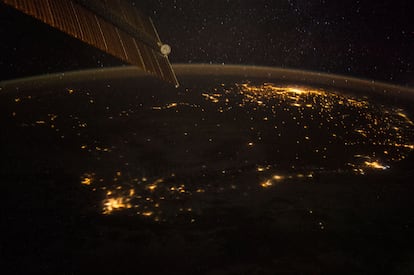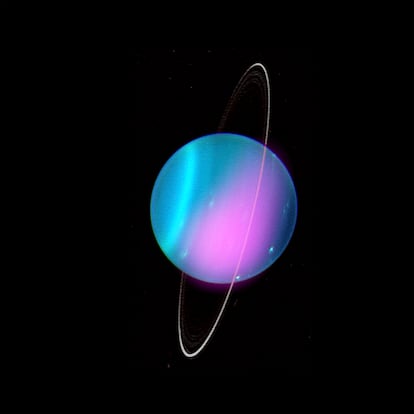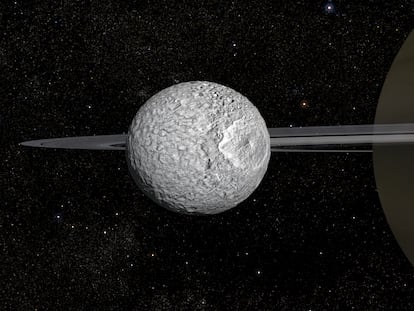Why does the night exist?
The concept of day and night on Earth is very different from that of other worlds, where a day can last longer than a year or areas of a planet can experience eternal night

Questions that seem too simple, naïve, or childish, such as why night exists, often lead us to complex answers that encompass a multitude of physical concepts and curious derivations. The existence of day and night derives directly from the fact that the Earth rotates on its axis and does not always face the Sun in the same direction. So, the question of why night exists becomes why does the Earth rotate on its axis, and how does it do so?
The explanation is based on fundamental physics and, as such, is extremely important for understanding how the universe works. We are not talking about such popular physics as the law of universal gravitation or the equivalence between mass and energy — E=mc² — but about the conservation of angular momentum, which is just as important as those equations. There are already many explanations regarding this: I will just say that in the formation of planetary systems, the conservation of angular momentum forces the planets to rotate.
Let’s continue on the road to understanding why night exists, adding more variables that affect that rotation. Do all planets rotate on their axis? Well, they should, if only because of conservation of angular momentum since their formation, but other things happen to planets that can stop their rotation. In fact, Venus is thought to have stopped its rotation, and even reversed it: it rotates in the opposite direction to the rest of the planets in the solar system and to its own orbit around the Sun. The result is that a Venusian year — the time it takes to go around the Sun, about 224 terrestrial days — lasts slightly less than a Venusian day — 243 terrestrial days. We can conclude that the concept of day and night is not the same on other worlds; at least, if we consider the duration of both that we earthlings have in mind.
Venus does have day and night; they just last a very long time. Is it possible for a planet to have no day and night at all? That is, to be more precise, is it possible that in one area of a planet it is always night? The answer is yes, and it is related to other physical concepts. Rotation is not solely responsible for day and night: if the Earth were to stop rotating tomorrow, day and night would not end on opposite sides of the planet.

Eternal days on exoplanets
As the Earth revolves around the Sun, if it didn’t rotate and always faced the same way, it would eventually leave the Sun to one side and finally behind our planet. Let’s move to the center circle of a soccer field and imagine that the Sun is on the center spot for kickoff. If a passer-by moves along the edge of the circle without rotating around its axis (i.e., always looking at the same end of the field, which implies that sometimes he would move sideways and sometimes have to walk backwards), in the middle of that path, equivalent to the orbit of a planet, he would lose sight of the ball, representing night on the planet. However, after completing another half-circle, he would again be able to the center spot, representing daytime.
For it to always be night or day in an area of a planet, during its orbital journey around a star the rotation of the planet on its own axis and the orbit around the star must be synchronized. In our example of the soccer field, the person moving around the center circle should be rotating as he walks, so as to never see the center spot — eternal night — to or always see it — eternal day. Such a degree of synchrony seems unbelievable, but it is possible, and very common in the universe: not by chance, of course, but by physics: the Moon itself is synchronized with the Earth, in the sense that it rotates on its axis over more or less the same timeframe as it rotates around the Earth. There is, therefore, a hidden face of the Moon that is never visible to us. If the Earth were its star and the Moon its planet, the Moon would have eternal night on part of its surface.
Are there planets synchronized with their star, similar to what happens to the Moon with the Earth? The answer is yes. We thought it was possible given our Selenite experience, and now we know of rocky planets like the Earth whose rotation and orbit have been coupled. These are called tidally coupled planets — the name comes from the fact it is the same thing that causes ocean tides on Earth. Obviously, this coupling has a dramatic effect on the probabilities of the existence of life. This may be the case for the planet LHS 3844 b, named Kua’kua (butterfly, in the Central American Bribri Indigenous language), the first planet discovered around the star LHS 3844, which is about 3,000 degrees cooler than the Sun, making it redder, as such the days there are not very bright.
Is there any other way to go without night, or day, for long periods of time? Well, yes: the length of the night also depends on how the axis of rotation is oriented with that of the orbit around the star. On the Earth itself, the axis of rotation is not perpendicular to the plane in which the planet moves around the Sun, which is called the plane of the ecliptic and is common to all planets, generally. As if it were a slightly tilted spinning top, there is an angle of 23 degrees between the axis and the ecliptic. This ecliptic angle, besides causing the seasons in some areas of the globe, makes the night very long or non-existent for months in the polar regions.

42-year nights on Uranus
Each planet has its ecliptic angle, depending on its formation process and surely based on very specific events. Could it be that this angle is so large that the rotation of the planet does not give rise to the existence of night and day? Well, Uranus, for example, rotates around an axis that forms almost 90 degrees with the ecliptic. It is as if our soccer field walker always moved around the center circle facing one end of the field, but pirouetting sideways, so that he rotated around his navel. The result for Uranus is that there is a point on the planet’s surface that has 42 years of night and 42 years of day over the course of its year, which is equivalent to 84 Earth years.
Is there any other way for an entire planet to always be at night? Again, yes: that it has no star and is a wandering planet. We have already talked about these lone wolves, so we’ll close today’s article here. We conclude first, however, by saying that something as commonplace for us as day and night doesn’t have to exist. Although we surely would not exist as we do without nights and days, which could lead us to say that we would not exist as we do without that conservation of angular momentum, that law of universal gravitation, or those tidal forces (and other effects that we have not detailed) — the physics that ultimately explains the reason for the universe.
Sign up for our weekly newsletter to get more English-language news coverage from EL PAÍS USA Edition
Tu suscripción se está usando en otro dispositivo
¿Quieres añadir otro usuario a tu suscripción?
Si continúas leyendo en este dispositivo, no se podrá leer en el otro.
FlechaTu suscripción se está usando en otro dispositivo y solo puedes acceder a EL PAÍS desde un dispositivo a la vez.
Si quieres compartir tu cuenta, cambia tu suscripción a la modalidad Premium, así podrás añadir otro usuario. Cada uno accederá con su propia cuenta de email, lo que os permitirá personalizar vuestra experiencia en EL PAÍS.
En el caso de no saber quién está usando tu cuenta, te recomendamos cambiar tu contraseña aquí.
Si decides continuar compartiendo tu cuenta, este mensaje se mostrará en tu dispositivo y en el de la otra persona que está usando tu cuenta de forma indefinida, afectando a tu experiencia de lectura. Puedes consultar aquí los términos y condiciones de la suscripción digital.










































